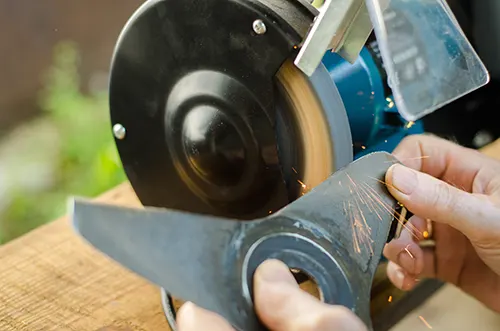29 October 2024

If you’re like many homeowners with large lawns, you likely welcome the beginning of winter as a break from the cycle of mowing all summer long and leaf-blowing all fall. But winter doesn’t just mean the end of outdoor chores for a few more months — it’s also the time for winterizing your lawn and garden equipment to keep cold temperatures and long periods of inactivity from becoming damaged. Leaving the fluids in your equipment at the end of the season can lead to serious damage that costs a lot to repair when spring rolls around. Make sure your weed trimmers, lawn mowers, leaf blowers, and other pieces of equipment are ready for the winter with these easy steps.
All gas-powered lawn equipment with internal combustion engines or batteries should be winterized to prevent damage during periods of inactivity and cold temperatures. Proper winterization helps maintain the performance and longevity of these tools, protecting them from degraded fuel, rust, and other issues that can arise from being left unused for long periods of time.
This includes the following gas-powered lawn equipment:
Man putting a red funnel into mower
Gas doesn’t stay good forever — or even for more than a month or two in many conditions. If enough time has passed or the temperature has been fluctuating, it will begin to separate, causing water to accumulate in the tank and rust it out. The separated fuel also causes the equipment to fail to start or run roughly until you get it all out again. Prevent this either by draining the tank or adding a fuel stabilizer product. Small equipment like powered hedge trimmers are easy enough to tip and drain, but you’ll need a small hand-powered pump for emptying equipment like a lawn mower. If there’s just a small amount of fuel in the equipment, try running it until it shuts off naturally to ensure that it’s empty.
Cleaning the bottom deck of lawn mower with a brush to remove grass clippings
To ensure the lawn mower or trimmer can’t start, disconnect the battery. Use a brush and a hose to clean away any accumulated debris. Leaving corrosive materials on the mower deck or trimming blades can cause rust over the winter, especially if there’s any water trapped between the material and the metal. Let the equipment dry before putting it away in a shed or garage.
Man removing an old filter from lawn mower
Each gas-powered piece of equipment will contain a fuel filter and an air filter. Replacing both of these filters at least once per year is essential for good performance. Proper filter replacements can extend the lifespan of a tool significantly while also improving the experience of using it. If you’ve been struggling to get good performance from a chainsaw or mower, a filter change may be all you need to restore it.
Image of three different batteries on a white background
Vehicle and equipment batteries need proper storage whenever they’re not being used on a weekly — or at least monthly — basis. Disconnecting the battery and moving it to a dry and somewhat warm environment will ensure that it’s ready to use again in the spring without replacement or recharging. Batteries hold their power over the winter if they’re stored between 40 and 80 degrees Fahrenheit. You should also replace the spark plugs and check out the condition of the wires when putting away a lawn mower or other large piece of lawn equipment for the winter.
Close-up image of oil cap and dip stick of a lawn mower
The oil in a lawn mower won’t separate or go bad over the winter like fuel will, but it’s still something you should change annually. Unless you manage to get to it in the middle of the summer, take care of it now — don’t wait until spring. String trimmers and other types of 4-cycle equipment also need oil changes, so don’t stop your efforts with the lawn mower. If nothing else, at least check the oil level and bring it to the recommended amount before winter. It’s not good to start up with a low amount of lubricant.
Person sharpening mower blade on a workbench, close-up
You may think of your lawn mower blade or the edges of your hedge trimmers as permanent, but they’re actually consumable parts. At the very least, you should consider sharpening your lawn mower blades with a sharpening tool for your power drill. Simply clean off the blades, grab a mower blade sharpening tool, and restore the edge. Doing so will ensure that it cuts smoothly again next year. You’ll need specialty sharpening tools for equipment like chainsaws and hedge trimmers. Replacing these blades is also an option, especially for any tools that have been cutting unevenly or binding up around the edges.
While storing electrical or battery-powered lawn equipment isn't as critical as winterizing gas-powered tools, it's still important to take proper care during the off-season. Since these tools don't have engines or oil, they require less maintenance. However, it's an excellent time to perform any necessary repairs and thorough cleaning.
For plug-in tools, make sure cords are inspected for damage and stored neatly to prevent tangles or wear.
Battery-powered tools should have their batteries removed, cleaned, and stored in a cool, dry place to maintain their longevity.
Proper storage and maintenance of both plug-in and battery-powered equipment will ensure they are in optimal condition when needed again.
Learn more, stop by Monnick Supply in Framingham and Marlborough.
Source: doitbest.com